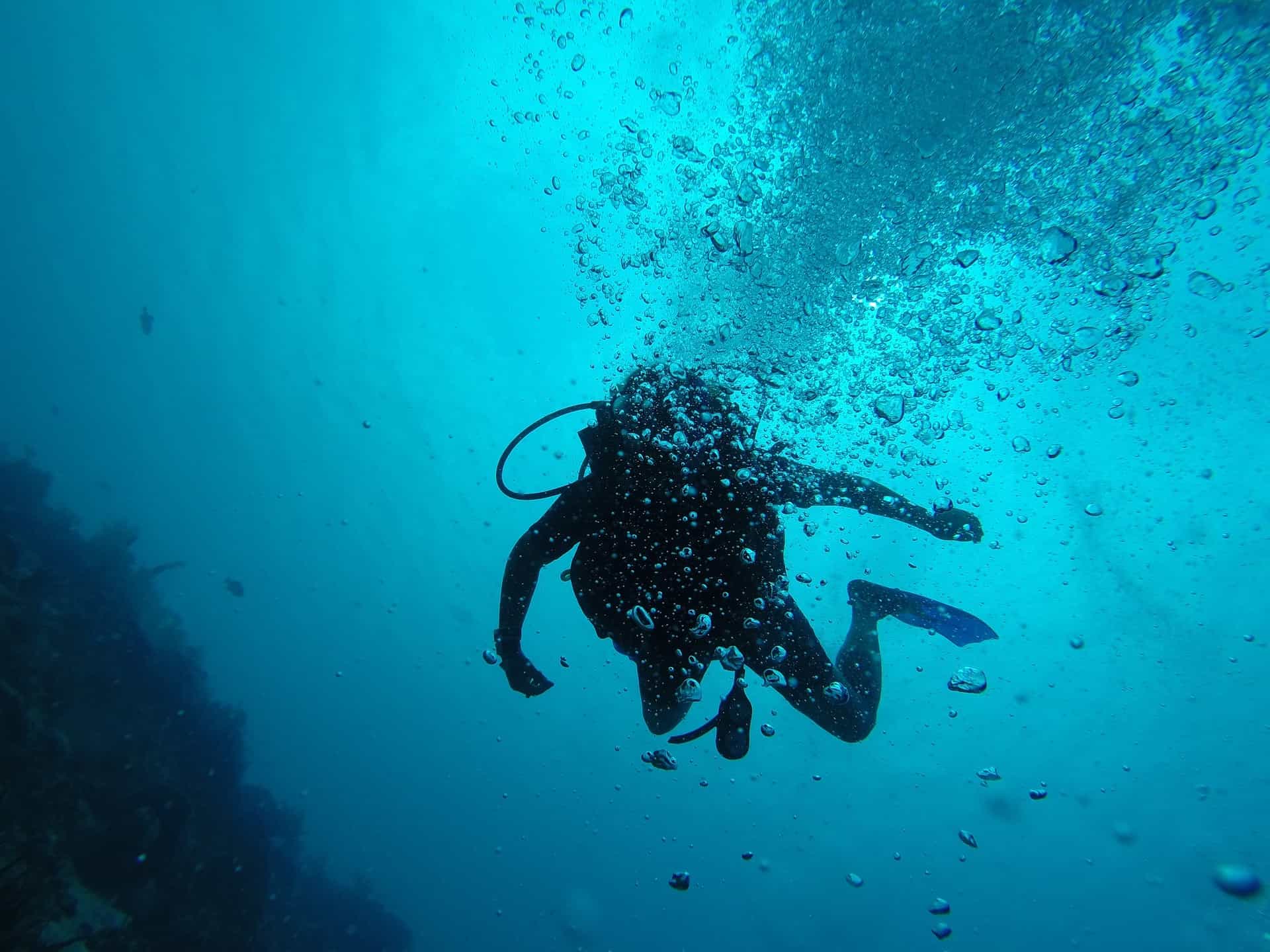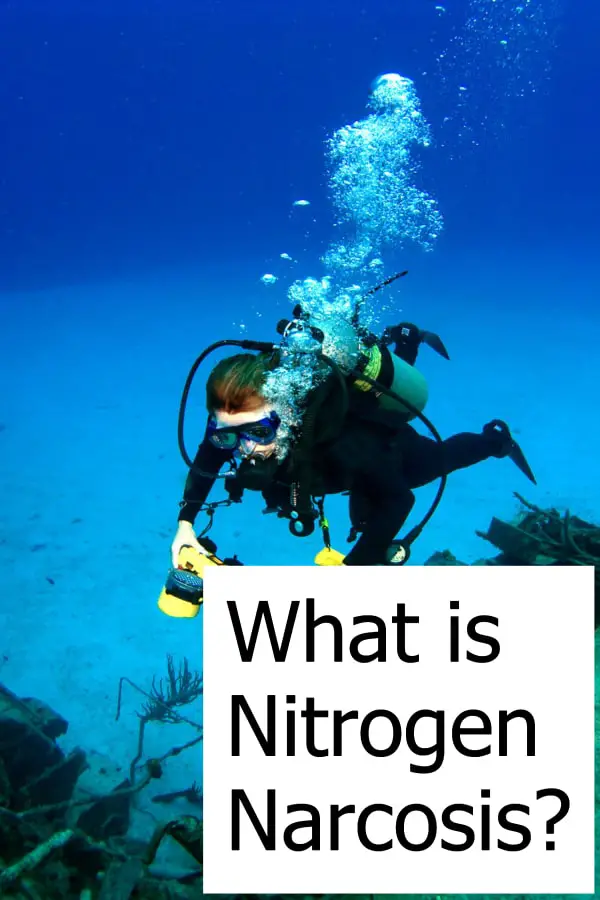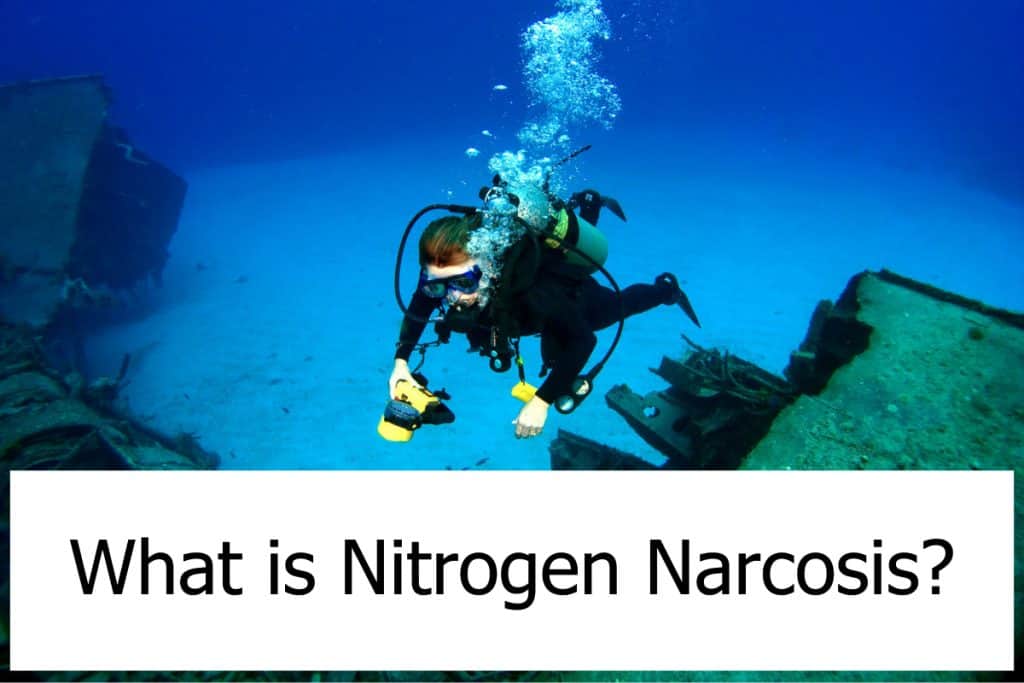What is Nitrogen Narcosis?
In your training you undoubtedly have heard of all the things that can go wrong underwater – think decompression illness, oxygen toxicity, and the like. And these are important concepts to be aware of because you’re not always going to be diving in the comfort of a training pool.
Of course, with proper planning and a good dive buddy, the risk of something going awry during your dive is low. But in order to have total peace of mind, it’s a good idea to be well-informed. In this guide, you’ll learn everything there is to know about one such underwater risk: nitrogen narcosis.
What is nitrogen narcosis, in a nutshell?
Put simply, our bodies cannot withstand large doses of nitrogen. When too much of this gas enters our bloodstream, we experience symptoms of narcosis: confusion, incoherent speech, inability to make rational decisions, and mood changes.
Many divers compare it to alcohol intoxication, in which a person may either be a happy drunk or a mean one. In fact, this process is often referred to unofficially as Martini’s Law, because descending to 30 feet causes similar effects as would drinking a martini.
And while drinking one alcoholic beverage generally wouldn’t impair you, it’s important to identify more severe cases. Just like you wouldn’t let your friend get behind the wheel after three drinks, you need to make sure that your buddies are not in danger during the dive.

Let’s get more technical
How does nitrogen narcosis happen on a molecular level? Well, it all goes back to Dalton’s Law of partial pressure. Surely, you have heard it all before, but this is the law stating that the total pressure of the gases in your tank is equal to the sum of the pressures of each individual gas. What this means in the diving world is that as pressure increases upon descent, partial pressures also increase.
And when you’re exposed to this increase in nitrogen, more of the gas enters your bloodstream, which will start to affect your central nervous system. In the best-case scenario, you can recognize the symptoms and take precautions. In the worst-case scenario, divers can lose function completely, and drown.
When exactly does it happen?
Because of Dalton’s Law, exposure to dangerous levels of nitrogen is going to depend on the mixture that’s in your tank. If you’re breathing air, most commonly used in recreational dives, the percentage of nitrogen will be 79%. With this mixture, you might start to feel the effects of nitrogen narcosis around 100 feet, although it will be very mild. Things start to get more severe, though, around 140 feet, which is the depth limit for recreational divers. Anything beyond that is highly discouraged if you’re breathing air.
Of course, divers do exceed this limit all the time, using different mixtures. Nitrox, for instance, has a lower percentage of nitrogen and allows divers to descend deeper while avoiding nitrogen narcosis. Heliox is another mixture that circumnavigates this problem by using gases that have no narcotic effect. That said, the use of these mixtures requires special training. They are generally reserved for more experienced or professional divers.
Other factors
You’ll notice that we’ve used phrases like “around” when it comes to naming a specific depth for narcosis to set in. That’s because every person and every dive is a little bit different. Unfortunately, the field of diving is lacking a lot of scientific answers about what contributes to narcosis, but there are a few factors that have been shown to make divers more susceptible to narcosis. Here are a few of the circumstances that will increase your likelihood of getting “narced,”
Cold temperatures – although it’s not entirely clear why this is, cold body temperature tends to increase the risk of narcosis.
Alcohol – if there’s one thing that every experienced diver can stress, it’s that you should never risk ruining your dive by consuming alcohol before going underwater.
Other drugs, even motion sickness pills – unfortunately, narcosis increases when nitrogen mixes with other substances. If you have to take something before your dive, just make sure that your dive buddy is aware and able to pay closer attention to signs of narcosis.
High levels of carbon dioxide – if you find yourself breathing more heavily, either from exertion or a problem with your equipment, you are once again more at risk for narcosis
How can you avoid it?
When you sit down to plan out your dive with your buddy, you should be calculating your maximum depth based on everything that we’ve covered so far: the gas mixture in your tank, the temperature, your previous experience with nitrogen tolerance, etc.
Because you’ve taken into consideration everything that could make you susceptible to narcosis, the best way to avoid it is to stick to the dive plan. A mistake that some divers make is to change the plan slightly when they’re underwater because they feel fine. What’s important to remember, though, is that just like your decision-making skills can become impaired with alcohol, you may not be making the best choices when you’re ingesting nitrogen. On the other hand, the dive plans were written out when you were clear-headed, so you know that you can depend on them to keep you safe.
Another way to avoid nitrogen narcosis, which we’ve touched on earlier in this article, is to use a different gas mixture. There are plenty of certification classes that you can take to become familiar with mixtures like Nitrox and Heliox, which will allow you to dive deeper without the threat of narcosis.
What should you do if you recognize it in your buddy
Clearly, it’s important to be able to identify the signs of narcosis in your buddy. That said, since everyone reacts a little differently, your buddy might not have all the symptoms. A good rule of thumb is that if you start to notice your buddy acting differently than normal, you should always play it safe.
Ascending even ten feet can alleviate nitrogen narcosis, and you’ll start to see your buddy return to a normal state. If the symptoms are severe, however, it’s your responsibility to get your buddy to safety. It’s much better to abort the dive early and try again than to deal with a more serious case of narcosis.
And there you have it
Everything you need to know about nitrogen narcosis. While it is a serious issue, we hope that this guide has taken away some of the unknown so that you can be fully informed when you dive.


